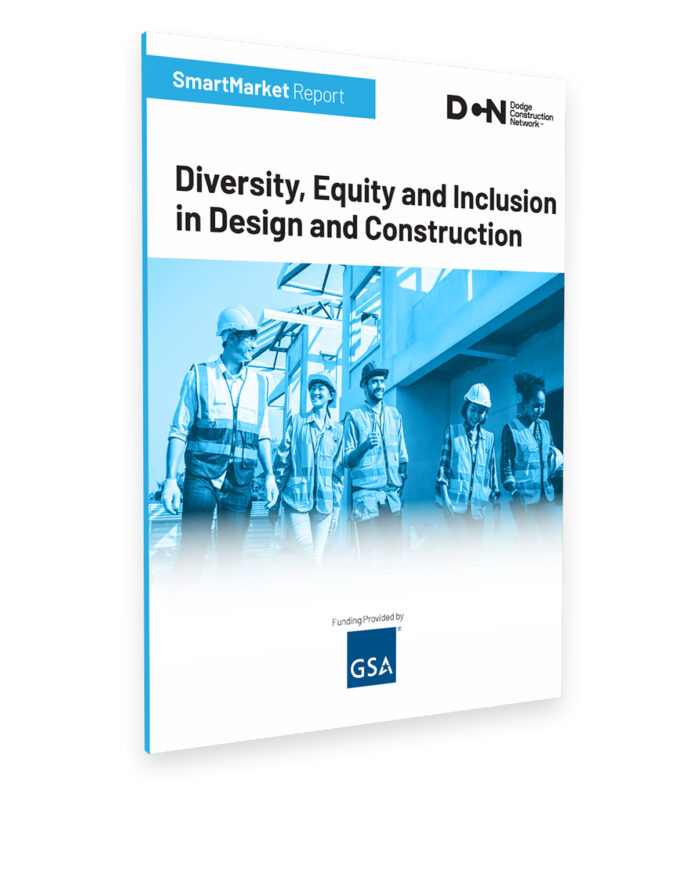More work is needed among architecture firms and construction companies to improve diversity, equity and inclusion (DEI), the U.S. General Services Administration (GSA) and Dodge Construction Network have reported in a new industry survey.
The Diversity, Equity and Inclusion SmartMarket Report also details the organizational and business benefits of doing so, the GSA says in a Nov. 10 statement.
The Request for Information (RFI) issued by GSA asked about engagement with a range of activities that these companies use to address diversity and inclusion at their own organizations, mainly focusing on practices involving hiring, training, promotion, leadership priorities and policies.
The companies were then grouped into three categories (high, moderate and low engagement); the findings were that 23% of architects and 15% of contractors falling into the “high engagement” category, while nearly half of architects (46%) and contractors (49%) falling into the “low to no engagement” category.
The top three ways architects and contractors are engaging in DEI activities include: Offering training promoting a more diverse, inclusive and positive workplace culture; considering diversity and inclusion when selecting other members of the project team; and, having a code of ethics that include a diversity and inclusion focus. Yet, more than half of the respondents indicated they choose only the training option.
Those utilizing any of the DEI activities in the survey were asked about the benefits to their firms, processes and projects they attribute to their DEI engagement. The findings clearly demonstrate those who are more engaged in DEI also experience more benefits from doing so:
- 83% of highly engaged architects and 61% of highly engaged contractors report they have a more inclusive and positive workplace culture.
- More than half of highly engaged architects experience benefits that enhance their firms, making them more competitive and better places to work, including improved employee well-being, expanded perspectives for decision making, better communication between leadership and staff, an increased ability to recruit workers, more commitment to their organization from younger staff members and improved industry reputation. They also report increased collaboration on their projects.
- The top benefits experienced by contractors are related to their efforts to recruit and retain workers. The worker recruitment benefits are direct, through increased access to skilled labor, and indirect, through having an improved reputation for industry leadership, which makes them a more desirable place to be employed.
In addition to examining their company practices and policies, the study also reveals the extent to which architects and contractors actively seek to improve how their projects impact the communities in which they are located.The findings here suggest some engagement, but leave plenty of room for improvement.
“The results of this survey reinforce the building industry has significant opportunity to embrace diversity, equity and inclusion and that, by doing so, can improve business outcomes,” said Nina Albert, GSA’s Commissioner of Public Buildings Services. “At GSA, we’re committed to leading by example and leveraging our buying power to increase diversity, equity and inclusion industry-wide.”
“It’s a critical time for us to get this right and make sure we’re leveraging these once-in-a-generation federal infrastructure investments and coordinated policy actions to advance DEIA in the communities we serve,” said GSA Senior Advisor to the Administrator for Equity, Andrea M. O’Neal, speaking of the Biden-Harris Administration’s equity priorities and commitments to the American public.
While almost half (49%) of architects report their firm considers community impact and well-being on more than 50% of their projects during design, only 22% seek community input beyond mandated requirements on the same share of their projects.
Similarly, nearly half (42%) of contractors prioritize hiring workers from the communities surrounding their projects but only 15% seek community input beyond mandates on 50% or more of their projects.


